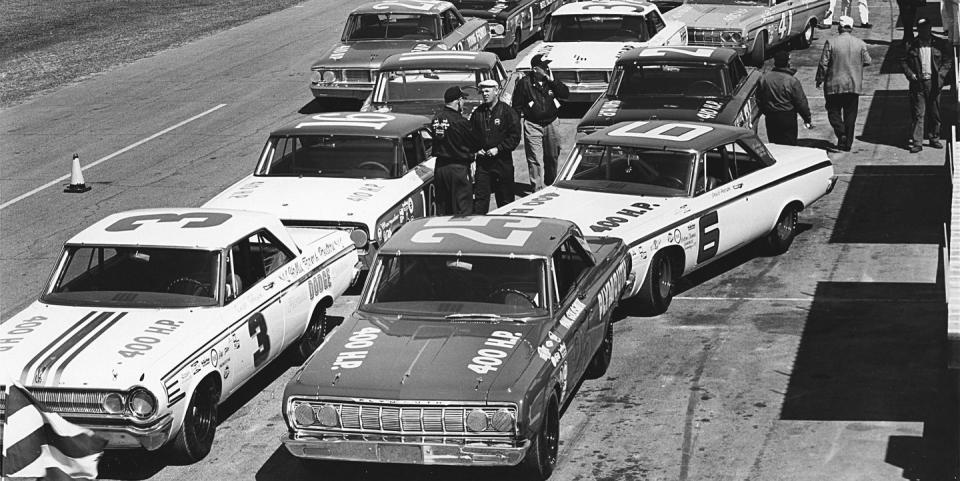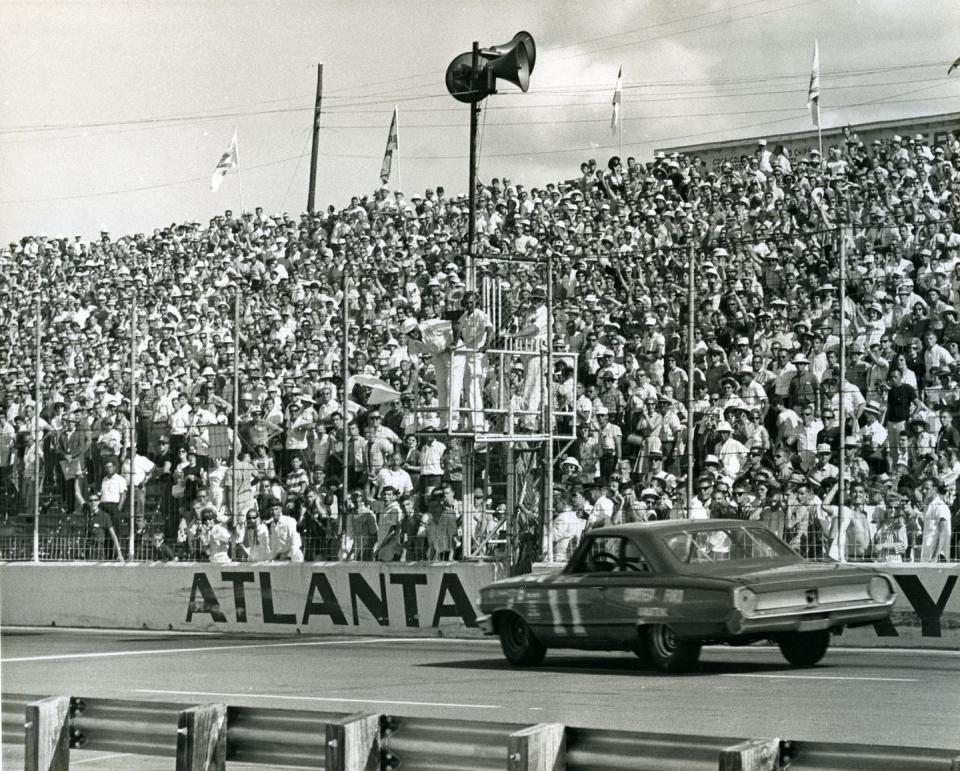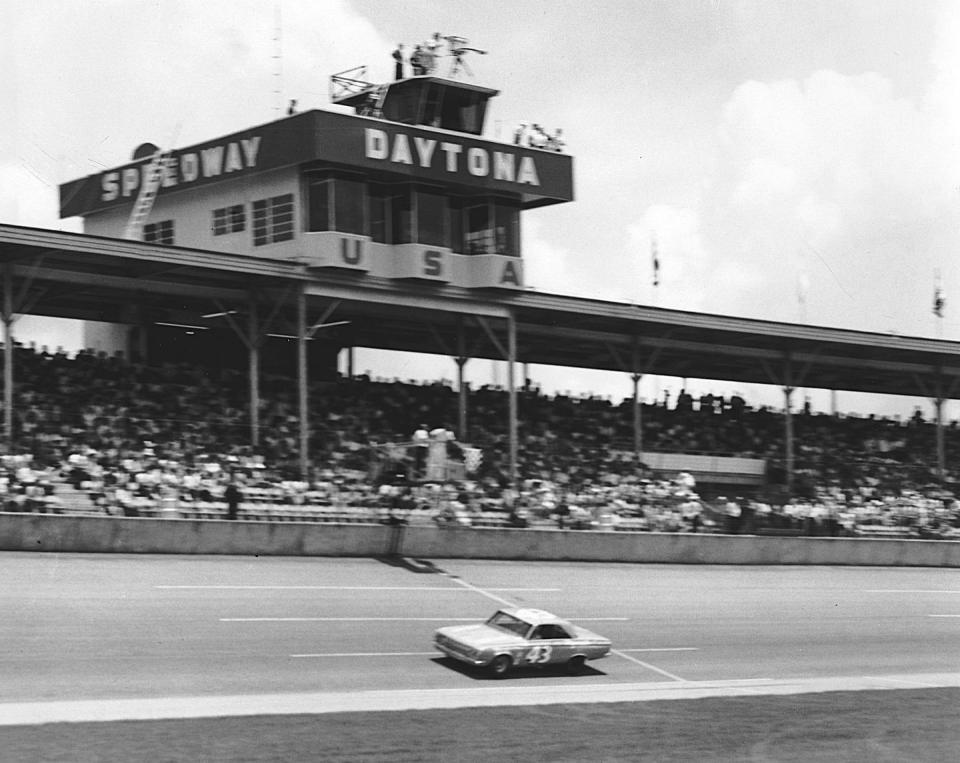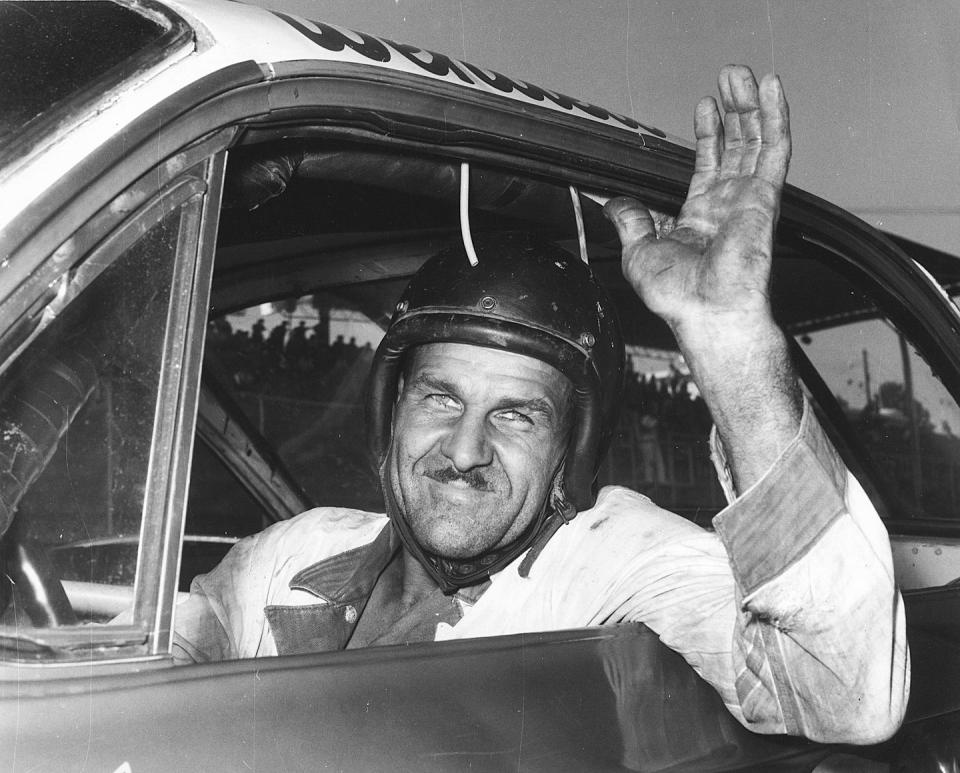Why the 2023 NASCAR Cup Schedule Will Be No Match for the 1964 Version

At 62 races, the 1964 NASCAR Cup Series schedule was the longest in Cup history.
In April 1964, the series raced five times in an eight-day period—at Weaverville, N.C.; Hillsboro, N.C., Spartanburg, S.C., Columbia, S.C. and North Wilkesboro, N.C.
Richard Petty, who won his first of seven championships that season, ran the complete schedule.
Behind closed doors, NASCAR officials are putting the final touches on the Cup Series schedule for 2023, and all indications are it will be a doozy.
Of course, this year’s schedule also was a doozy, the dooziness most outwardly represented by moving the Clash from its long-time home at Daytona International Speedway to a purpose-built short track at Los Angeles Memorial Coliseum. That experiment got high marks, so much so that NASCAR already has announced that the Clash will return to LA next year.
It also is known that the Daytona 500 will be held Feb. 19, and the season finale will return to Phoenix Nov. 5. The non-points Clash is set for Feb. 5.
Soon, the rest of the schedule will be revealed, and rumors persist that it will contain a street race, perhaps in Chicago.

Teams had only one off weekend—last weekend—in the regular season this year, and there is occasional lobbying for NASCAR to make changes so that there can be more downtime, particularly for mechanics. That doesn’t seem likely, however.
To keep this year’s 38-race (including the two non-points events) schedule in perspective, take a look at the 1964 schedule, at 62 races the longest in Cup history.
Yes, 62 races. Obviously, many were one-day shows, the teams racing one night and hauling race cars to the next track for another race only a day or two later.
In April 1964, the series raced five times in an eight-day period – at Weaverville, N.C.; Hillsboro, N.C., Spartanburg, S.C., Columbia, S.C. and North Wilkesboro, N.C.
“It was a different world,” said Dale Inman, the Hall of Fame crew chief who traveled that long and winding season with the year’s ultimate champion, Richard Petty. “When I hear guys now say how they’re burned out, I bring this up. Now they complain if they don’t get a window seat on an airplane.”

The 1964 schedule was so long that it actually started in 1963, a typical NASCAR scheduling device in those days. The “new” season generally started the previous November.
So 1964 saw four races in 1963, including the controversial Dec. 1, 1963 race in which Wendell Scott emerged victorious but wasn’t officially named the winner until after Buck Baker had enjoyed the fruits of victory lane.
Petty, who won his first of seven championships that season, ran the complete schedule. He logged 61 races (the only one he wasn’t in was one of two Daytona 500 qualifying races in February).
“That was the Petty business – to race every week,” Inman said. “When Lee (Richard’s father and the team founder) started racing, that was how the family survived. What they won is what they run on. The winnings paid the motel bills and gas bills. It was the way they made a living.”
Particularly brutal was a mid-season swing to the Northeast, then known as the Northern Tour. After racing in the traditional July 4 Firecracker 400 at Daytona Beach, drivers ran at Manassas, Va. July 8, Old Bridge, N.J. July 10, Bridgehampton, N.Y. July 12, Islip, N.Y. July 15, Watkins Glen, N.Y. July 19 and New Oxford, Pa. July 21.

Six races in a 14-day span, including a 300-lapper on the .2-mile track at Islip.
“One of the big strains on us was the Northern Tour after running at Daytona on the Fourth of July,” Inman said. “I remember racing in New Jersey and after the race Richard said, ‘We better get through town before the traffic.’ ”
“Town” was New York City.
“We towed the cars right through New York City,” Inman said. “That kind of stuff is just something we did. There’s a lot more planning to it all now, but then we just kind of took it as it happened.”
It wasn’t unusual for teams to run one night, tow their cars to the next town, check into a motel and work on the cars in the parking lot before racing the next night. Occasionally, a car dealership would give teams space to do repairs.
There were no “stables” of race cars like in today’s world; teams typically raced one car for much of the season.
The 1964 season featured 23 races on dirt and 35 on paved tracks. Four were on road courses. Twenty-eight were 100-milers. Most teams didn’t run the entire grind. For example, fields were tiny at Spartanburg (19 cars), Savannah (12) and Myrtle Beach (12). But the Pettys, to copy a Johnny Cash phrase, were “everywhere, man.”
“I don’t think I worried about being tired,” Inman said. “It was a lot of hard work and travel, but there are great memories. It was enjoyable just to be around the people and the race cars.”

 Yahoo Autos
Yahoo Autos 